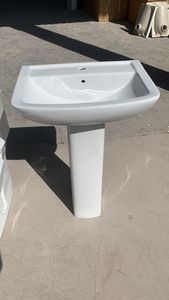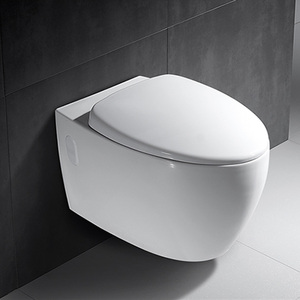(1322 products available)




































































































































































































An Indian toilet wc is a commode that is commonly used in India and other South Asian countries. It is a water closet that is installed on the floor, as opposed to a wall-mounted toilet. This type of water closet is designed in such a way that one has to squat down to use it. It is different from Western toilets that are used in most other countries, which are installed at a height and require the user to sit down to use them. An Indian toilet is a commode that is installed on the floor, as opposed to a wall-mounted toilet. Here are the types of Indian toilets:
Indian closet:
The Indian closet is a commode that is installed on the floor. It is different from a Western toilet because it is not attached to the bowl. The user has to bend down and squat to use an Indian closet. This is how they were designed to be used. Indian closets are cheaper than Western toilets, and they are also more hygienic because people do not have to touch the toilet seat. Indian closets are also more convenient for people in countries like India, where there are not many bathrooms available.
Squatting closet:
A squatting closet is a type of water closet that requires the user to squat to use it. It is installed on the floor instead of being mounted on the wall. A squatting closet is commonly found in countries like India, where people are used to using this kind of toilet. It is a toilet that is used more in the world than sitting ones because of the way it is designed; it is easier to use and more convenient.
Washdown closet:
A wash-down closet is a type of commode that is popular in India and other Asian countries. It is a simple kind of closet that uses suction to flush away waste. It works like a toilet in a Western country. However, the design is slightly different because it is mounted on the floor instead of the wall. A wash-down closet is cheaper than other kinds of commodes, and it is also more popular in developing countries because it is easier to maintain and does not require a lot of water to flush.
Pit toilet:
A pit toilet, also known as a latrine, is a toilet that is used without water. It is a toilet that is commonly found in rural areas where there are no flushing toilets. A pit toilet is usually a hole in the ground that is enclosed in a small structure. It is more basic than other types of toilets and is less hygienic because it does not use water to flush away waste. However, pit toilets are still used in many parts of the world, especially in remote areas where there are no other kinds of toilets.
There is no type of toilet called a closet:
A toilet that is called a closet is simply a commode that is mounted on the wall. It is a type of commode that is very popular in India and other countries. It is similar to a Western toilet but has a different design because it is mounted on the wall instead of sitting on the floor. A closet could refer to a squatting closet or a closet that is used in the sitting position.
As mentioned earlier, a water closet is another name for a toilet. An Indian water closet is a toilet that is used in a squatting position. It is a basic type of toilet and has no flushing system. It is commonly found in public restrooms, rural areas, and developing countries. It is a cost-effective solution for toilet needs in many areas.
There are various features of an Indian toilet WC, including:
The Indian toilet WC is a common sight in most homes, but its applications go beyond the residential setting. Here are some applications of the Indian water closet.
Residential Homes
As earlier mentioned, the Indian toilet WC is a staple in most homes. Its popularity in the residential space is due to its cost-effectiveness and simple design. Its space-saving design is also a plus for homeowners looking to maximize their space. The Indian WC is also easy to maintain, making it a preferred choice for many homeowners.
Commercial Buildings
Indian toilets are also common in commercial buildings, including hotels, restaurants, and offices. The durability of the Indian WC makes it a popular choice in the commercial space since it can withstand frequent use. Additionally, Indian toilets are usually more affordable than other toilets, which is a plus for many commercial establishments.
Public Toilets
Most public restrooms are equipped with Indian toilets. For starters, Indian toilets are more hygienic than their counterparts since users only need to use their elbows or knees to flush, meaning they don't have to touch the flushing mechanism with their hands. Also, Indian toilets can accommodate more users at a lower cost per unit than other types of toilets.
Rural Areas
Indian toilets are popular in rural areas due to their affordability, ease of installation, and maintenance. The Indian WC is usually installed in the wall, which eliminates the need for complex plumbing. Additionally, Indian toilets do not require electricity to function, making them ideal for rural areas that lack basic amenities.
Travel Trailers and RVs
Most travel trailers and RVs are fitted with Indian toilets. This is because Indian toilets are compact and don't take up much space, which is ideal for RVs and trailers. Additionally, Indian toilets are more energy-efficient since they don't require water to flush, which is a plus for people trying to conserve water.
Toilet for the Elderly and People with Disabilities
Fortunately, modern Indian toilets have been adapted to accommodate the elderly and people with disabilities. Such toilets are usually fitted with support handles that help users balance themselves when using the toilet. Additionally, some Indian toilets are elevated to make them more accessible.
When choosing a water closet, there are several things to consider. What needs to be looked at are the needs of the user, the space available, and the budget. Here are some tips to help choose the right Indian water closet.
Space Available
It is important to measure the area where the water closet will be fixed. This will help in determining if a compact close-coupled or a more spacious fully concealed or wall-mounted water closet is needed. If the area is small, then it is best to go with a smaller option.
User Requirements
Consider the needs of those who will be using the water closet. Options like the comfort height or angled pan are best for users with limited mobility. These are easier to use while standing or sitting.
Budget
Water closets come in different price ranges. Determine a budget and look at options within that budget. Remember that choices like the Indian floor-mounted WC or the Indian squatting pan are usually more affordable.
Efficiency
Look for water closets that use less water with each flush. This helps to conserve water and is better for the environment.
Hygiene
Hygiene is very important when choosing a water closet. Options like the rimless toilet or those with antibacterial surfaces are easier to clean and more hygienic.
Comfort
It is important to sit comfortably on the seat for the water closet to be used many times daily. Look for models with comfort-shaped seats and ergonomic designs.
Installation
Consider who will be installing the water closet. Some models require special skills, like the wall-mounted WC, while others can be easily installed by anyone, such as the Indian standard toilet. Choose a model that can be installed based on the skills available.
Maintenance
Choose a water closet that is easy to maintain and clean. Models with smooth surfaces and simple designs are easier to take care of.
Q1. What is the difference between a water closet and a toilet?
A1. A toilet is a room with a toilet, while a water closet is a small room with a toilet and a door. However, in modern usage, the terms ""toilet"" and ""water closet"" are often used interchangeably.
Q2. What are the two types of toilets?
A2. The two main types of toilets are:
Indian-style toilets: These are squat toilets commonly found in India and other countries.
Western-style toilets: These are sitting toilets that are more widely used in Western countries.
Q3. What are the two types of water closets?
A3. The two types of water closets are:
Single water closet: This is a private toilet for one person, commonly found in homes, offices, and public restrooms.
Attached water closet: This is a toilet that is attached to a bathroom, typically for use in a home or apartment setting.